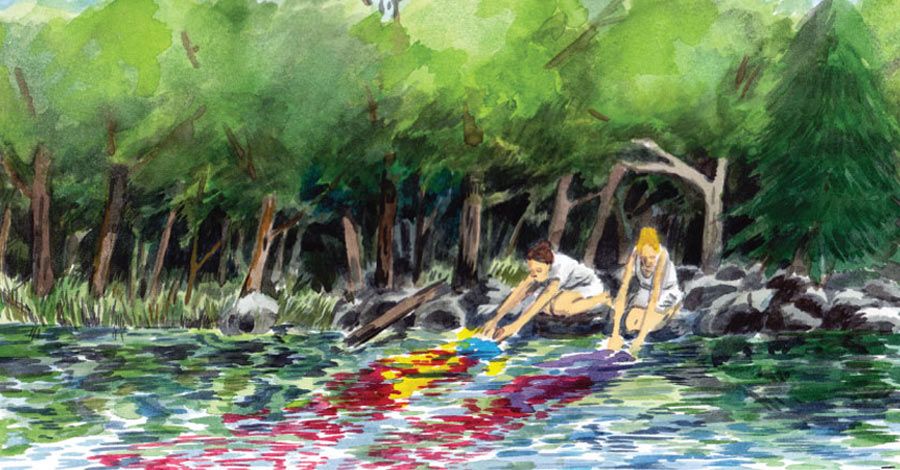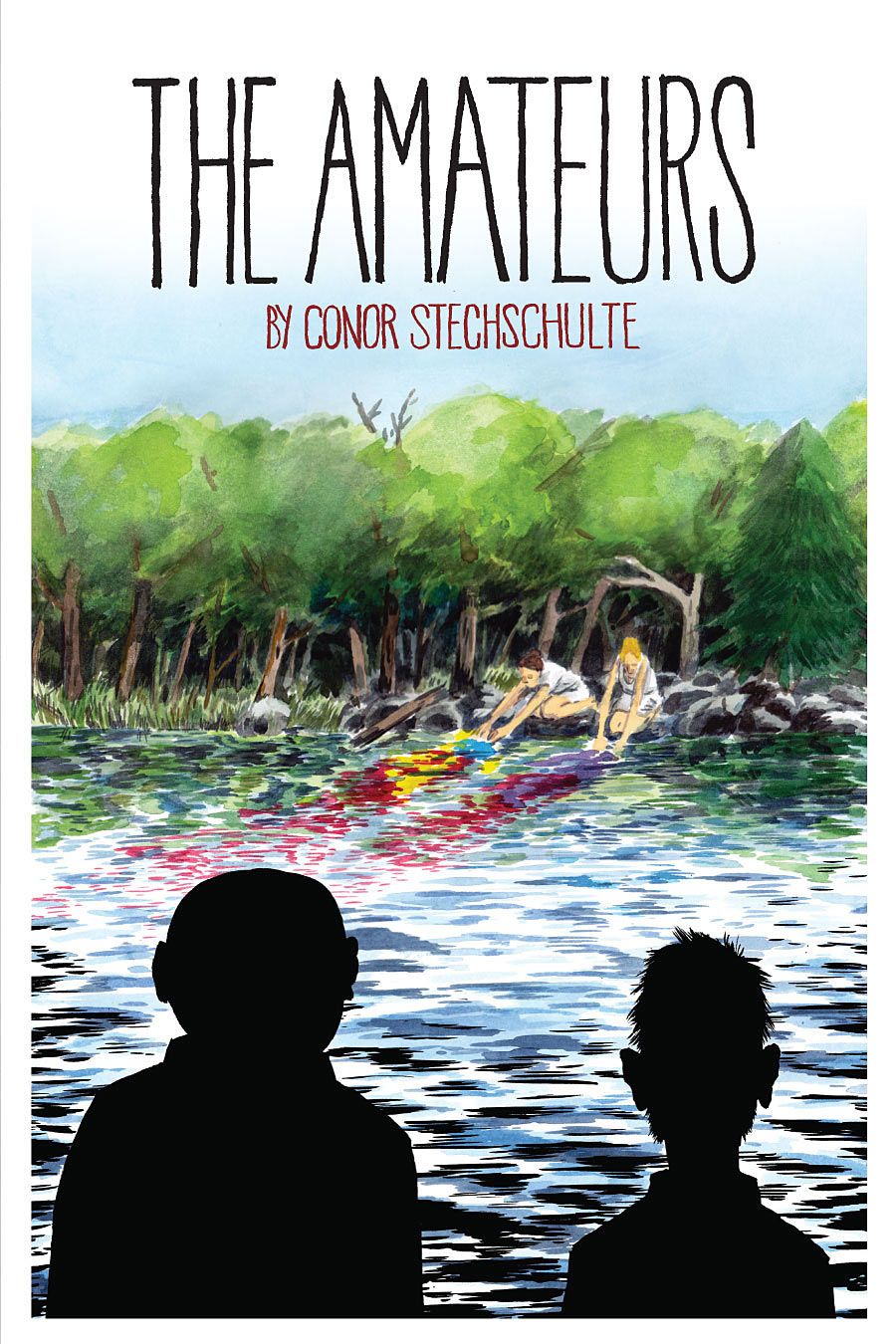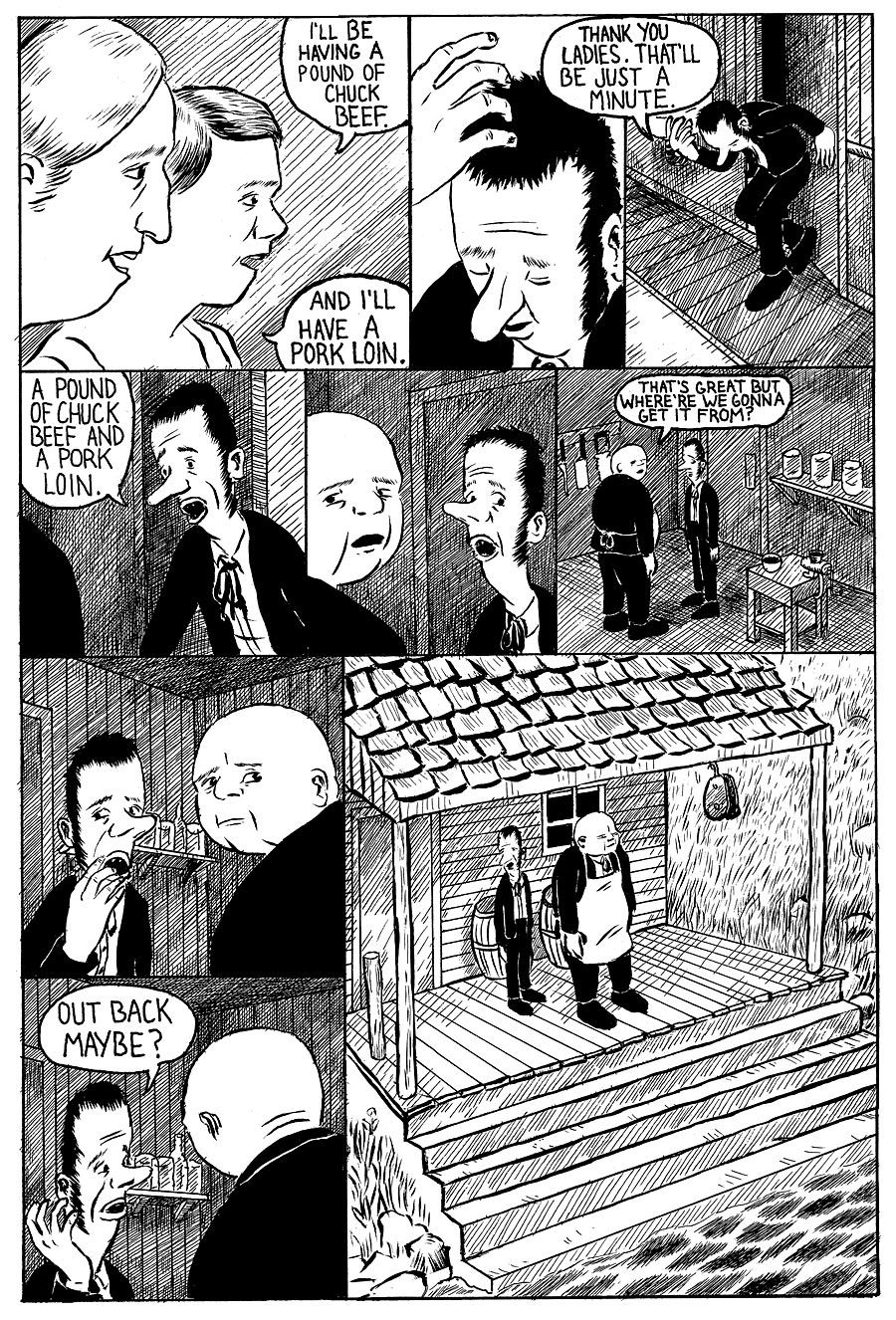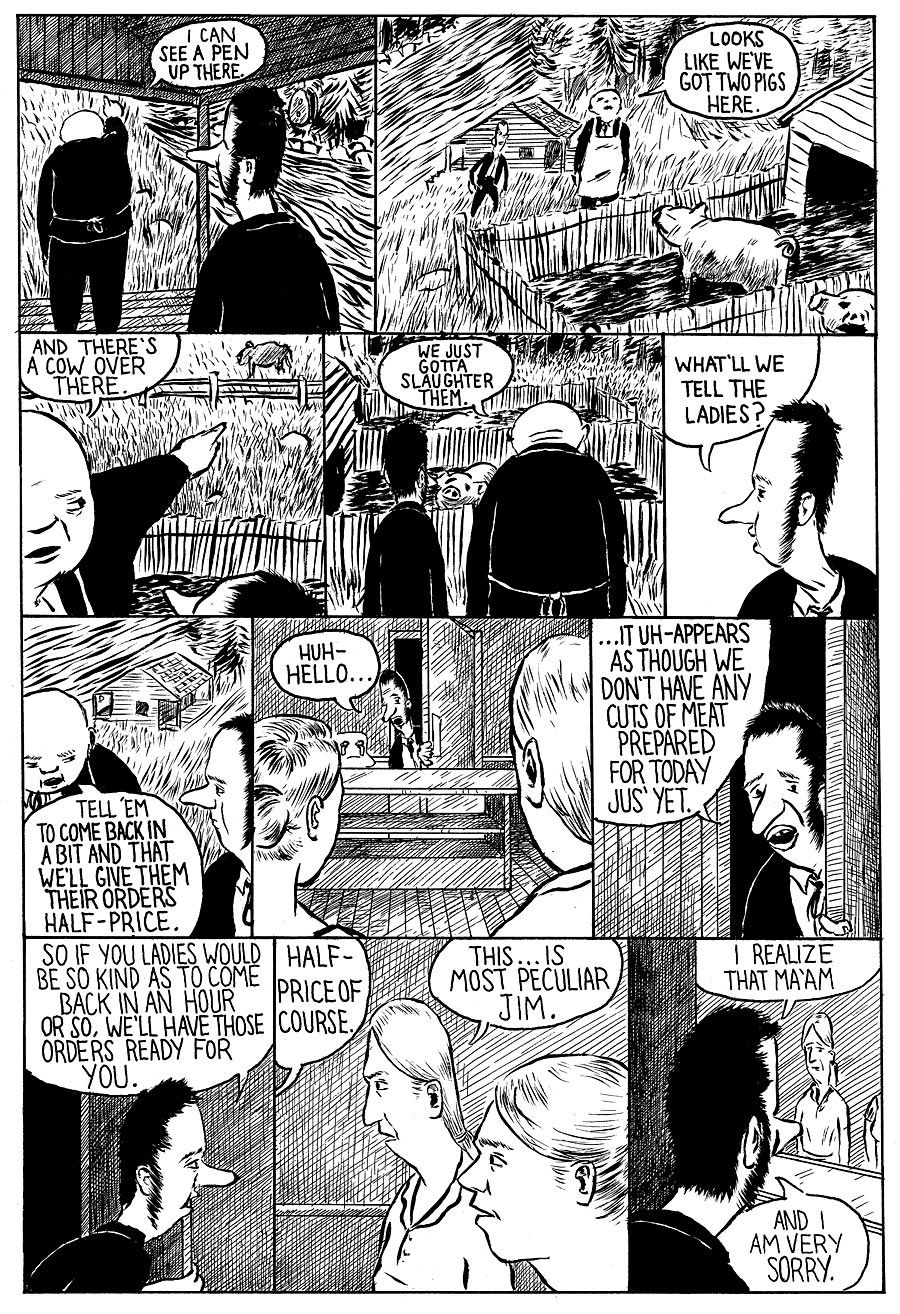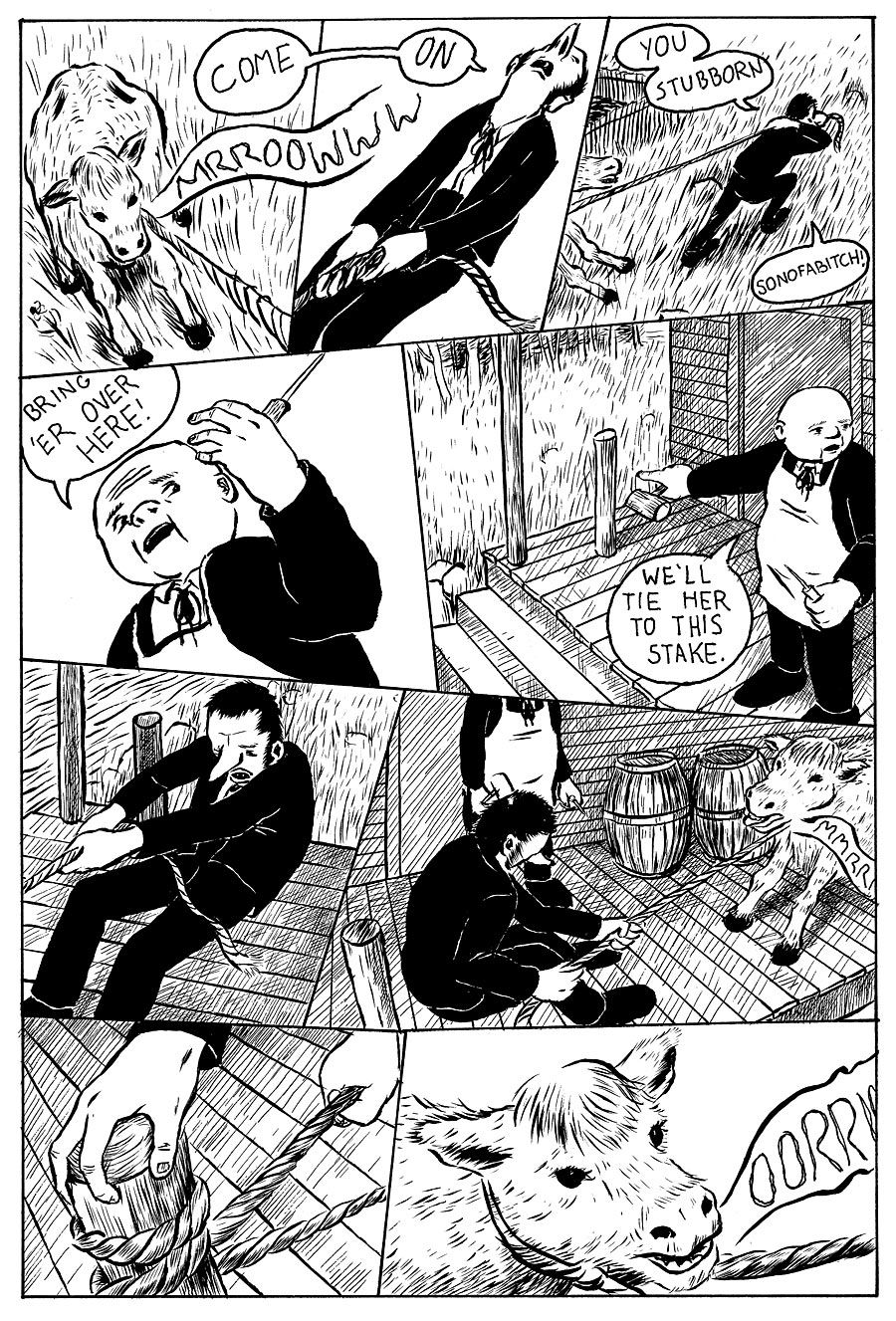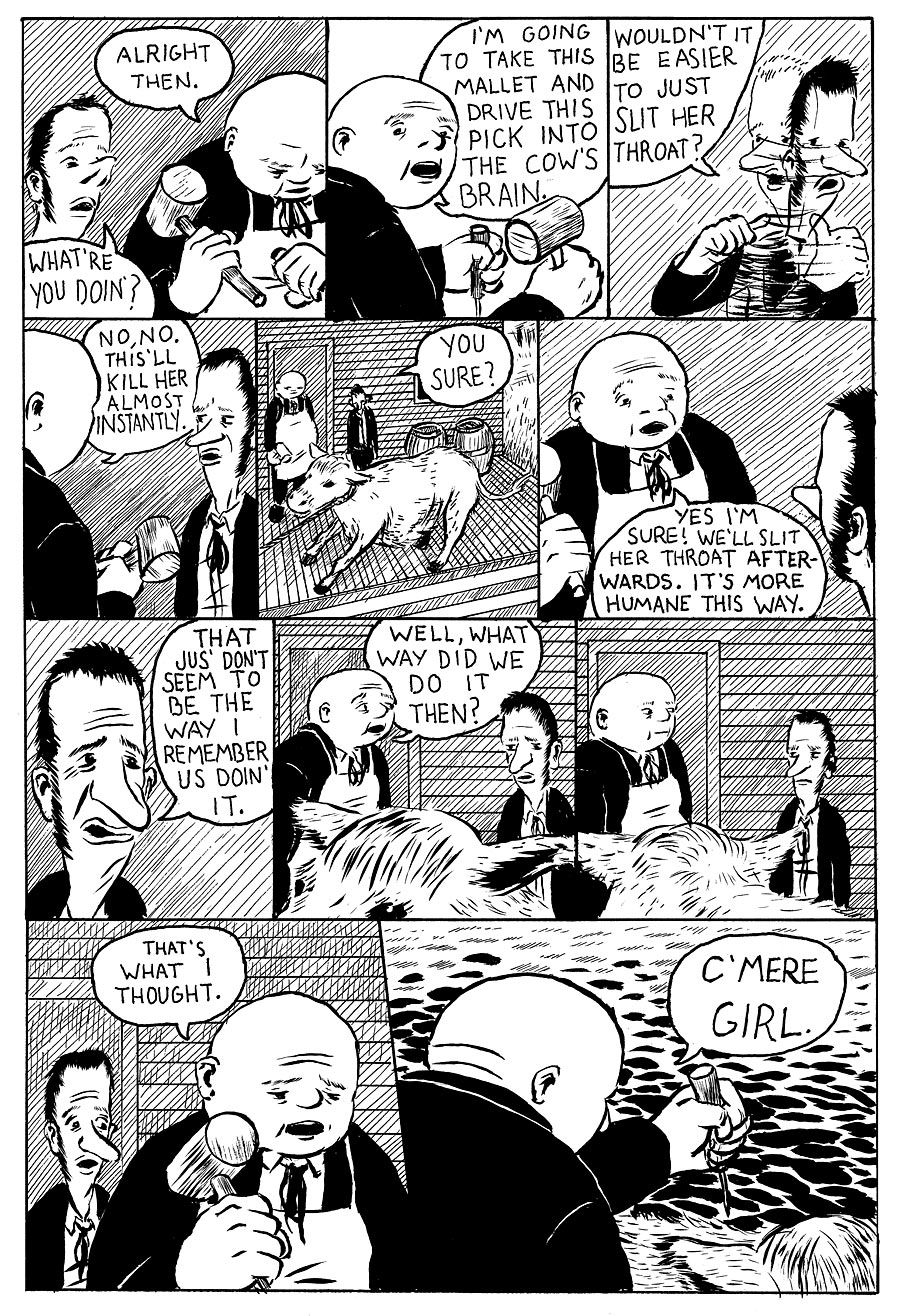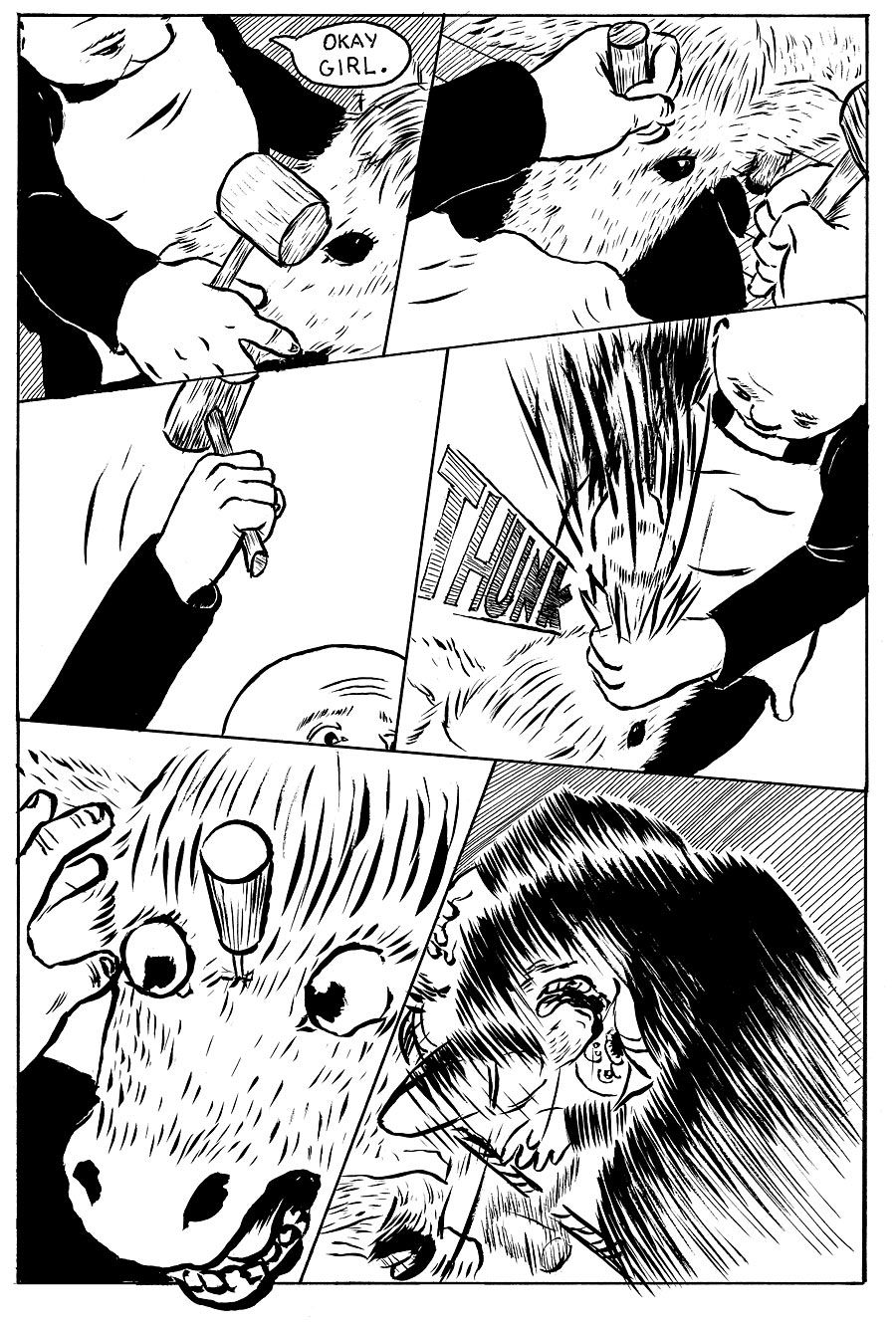Conor Stechschulte isn't a name most comic readers are familiar with. After all, the young artist's first full length book, "The Amateurs," was only recently released by Fantagraphics.
In his debut graphic novella, Stechschulte tells the story of two butchers who arrive at their shop one morning to find that most of their memories are gone -- including how to do their jobs. The result is a story equal parts comedy and tragedy, and shrouded in mystery. Among the mysteries is the fact that in the opening pages, a disembodied head washes ashore from a river. Not the strangest sight in the world -- at least until it starts talking.
"The Amateurs" is an unsettling, "Twilight Zone"-esque tale that marks the full-length debut of a talented cartoonist. CBR News spoke to Stechschulte about the book itself, where the story began for him, and the young artist's cartooning background.
CBR News: Could you introduce yourself to our readers by talking a bit about your background as a cartoonist?
Conor Stechschulte: I grew up in a college town surrounded by Amish country in Pennsylvania. Also there was a huge federal penitentiary in town. I went to an arts boarding school in northern Michigan for one year of high school before coming to Baltimore to go to the Maryland Institute College of Art. While there I met Chris Day, Noel Freibert, Molly Goldstrom, Lane Milburn, Andrew Neyer, Pete Razon, Ryan Cecil Smith, Eric Stiner, Zach Hazard Vaupen and Erin Womack, and we started making comics together as "Closed Caption Comics" and egging one another along to make zines and comics.
I'd always been into comics and felt drawn to making them but couldn't figure the process out in a workable way until meeting up with that crew. Right as we started going to SPX and paying attention to alternative comics was when "Kramer's Ergot" #4 and #5 had come out and Picturebox was just getting started and I think we were all really excited about this new kind of comics that had a sort of weirdo/fine art approach rather than a literary/illustration approach. All of us except Erin were printmaking/painting/fine art majors (I hold a degree in painting with a concentration in printmaking) so we were all interested in making comics as part of a "studio practice."
After school I stuck around Baltimore. I played in a band called Witch Hat with Noel and Lane and then Chris that just completed its life-cycle last October. My friends and I started a gallery/performance space called "Open Space" in 2009. The building caught fire last year and so now it's a sort of just an organizing entity for the time being. We put on an event called "The Publications and Multiples Fair" every year that is a book/zine/print/whatever festival that's really fun. Other than that, I live in a house with my girlfriend and work at Whole Foods.
How do you describe "The Amateurs?"
I'd say it's a horror/comedy story about two butchers with amnesia. Also I might say it's "weird," and maybe "a little gory."
Where did it start for you?
The seed came from a passage in Werner Herzog's book "Conquest of the Useless" which collects his journals from the making of "Fitzcarraldo." He describes seeing these inept butchers in Iquitos at a slaughterhouse with steep steps. The scene he described just lit my brain up. A lot of the imagery from the passage made its way into the book: the butcher cutting off his toe without noticing, screaming pigs, a cow escaping into the river.
There are two different stories -- or three, really, if you think of Martha and Shelley as their own story. Was your thought from the beginning that the story would work like this?
In the beginning it was pretty straight ahead following the events of one day with these butchers chronologically. The two ladies fit naturally into that narrative. In the first version -- I self-published a version of the book in 2011 -- the prologue was a journal entry of a doctor that had found the head rather than the two teenage girls. And maybe a year or so after I finished the book I felt pretty dissatisfied with the prologue and had the thought that the head should have washed up at an all girls school and sorta said, "Oh well." Then I got the opportunity to go back to it with the Fantagraphics version so that was one of the first things I knew I would add. There were certain things that I thought the book was talking about that when I reread the first version didn't really come to the surface. The Anne M. Nemeth journal parts let me bring those ideas out a little more and to end the book on a more optimistic note than it did previously.
There's an electricity you get when you butt a couple narratives up against one another that got me really excited when I started doing it. Especially with this kind of story where I felt I had to approach its themes from an oblique angle it worked best to place the content of the book in the space between those two or three stories, if that makes sense.
Did you do research as far as what's involved with butchering animals?
In the beginning I didn't do a whole lot of research, but just as I was done penciling the whole book and getting ready to ink it I visited my brother who's a photographer and filmmaker. He was starting to edit a documentary he made called "Small Farm Rising" about young farmers. I was telling him what my story was about and he said, "Well, do you want to see some butchering footage?" So I sat down with him and watched the unedited footage of a cow and a pig being killed and butchered. Seeing that stuff in motion was really important. I got to get a sense of the size and weight of the animals and what it takes to move and manipulate them. It was much different than what I'd imagined so I went back and changed a bunch of things like the size of the knives the butchers use -- all the knives I'd drawn were too wide. Real knives used for butchering wind up being really skinny from all the sharpening.
Why did you opt to tell the story and black-and-white, but the cover is in color? Not to mention the red ribbon inside the front cover...
The black-and-white was just a practical thing. When I started drawing the book, we had a big black and white photocopier at "Open Space" where I was living, so I was planning on printing the book on that and maybe screenprinting the cover. In the process of drawing it, that photocopier got rain water in it and broke and we started renting a Risograph machine that could print black, red, and blue. So I printed the book on that with a three color cover and a couple interstitial color pages. With the new version, it wasn't practical to have the color pages within the book and didn't make sense to keep the original black, blue and red cover when, with the digital printing, that would have to be printed full-color anyhow so I made a full-color version. The red on the inside cover/title page forms a transition from that full color world to the black-and-white world of the book and also -- along with the blue on the back inside cover -- is a reference to the colors of the first printing.
Why is the title, "The Amateurs?"
I unconsciously or semi-consciously stole it from the title of a short story written by someone in a writing class my girlfriend was taking five years ago. I had sort of forgotten what the story was about and just remembered it as an evocative title. When I got the idea for the book the title naturally attached itself to it. I was recently looking at the first page of notes I wrote to outline "The Amateurs" and the title was there from the beginning. Before the two main characters had names I was writing "Amateur 1" and "Amateur 2."
One of the primary things I was trying to capture is the common theme of a lot of dreams where you've arrived a situation where you have to perform some sort of specialized task for which you possess no skills or experience. Adulthood feels a lot like that for me.
"The Amateurs" is available now from Fantagraphics.

